What Is the Difference Between Website Design and Website Development?
- February 28th, 2022
-
Branding
Community Spotlight
Marketing
Web
- Swarm Digital
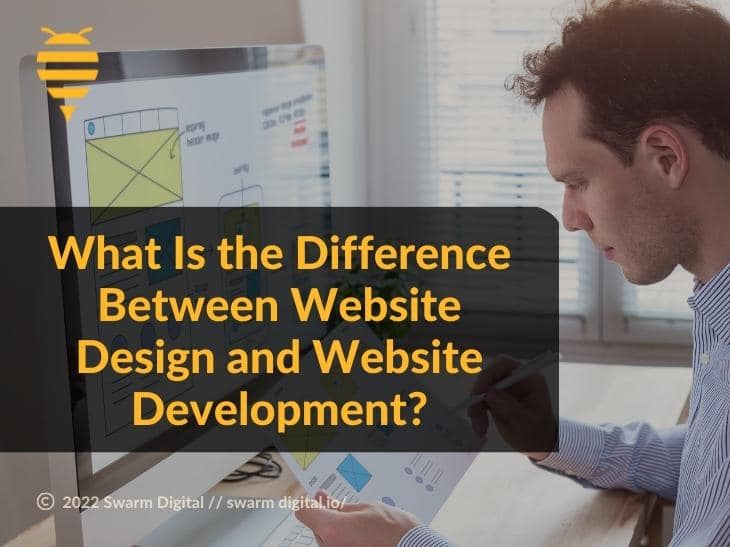
What do we do at Swarm Digital Marketing? We make websites and more. Easy to explain, right? Not necessarily–sometimes the terms can get confusing. In fact, sometimes they’re used interchangeably. What is web design? What’s web development? Is there a difference? Does it matter? YES. In this article, you’ll learn the difference between website design and website development–and why it’s essential for your site to nail both. You’ll also discover how Swarm Digital’s approach to them can position you and your business for success.
Design – It’s What You See
Simply put, website design is the process of deciding how a website will look. That’s it: a web designer takes care of the visuals.
So, is a web designer just a graphic designer who makes pretty pictures with cool fonts? No. While both are artists, web designers consider how users interact with the design. That’s why they use terms like responsive design, information architecture, and visual hierarchy–they obsess over a website visitor’s experience with your business.
That brings up two terms you hear a lot when discussing websites: UI (User Interface) and UX (User Experience). These disciplines answer the questions
- How should a user feel when visiting the website?
- What should the user comprehend, etc. when going through your website?
- What will be the general user flow? meaning…
- How will we convert the user from one page to another?
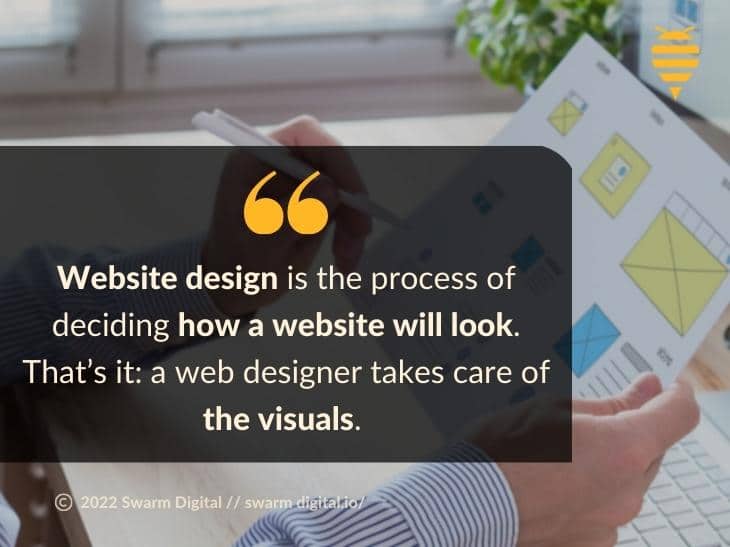
Here’s what a web designer asks about their product:
Is Your Website Giving a Clear and Concise Message?
End of the day, the purpose of a website is to communicate your business to customers, explain what you do and how you can solve their problems better than anybody else, and provide a way for them to reach out to you. And that makes clarity the most critical aspect of visual design.
Here’s a bad example. The Yale School of Art’s website is a perennial favorite in many “worst websites on the web” awards, and for a good reason: it looks like it picked a fight with 2000s-era Myspace and lost. It’s dissonant in the extreme, unusable, ugly, and most of all, unclear.
Bad example number two: pretend you’ve never heard the word “Craigslist” in your life. Now, click this link and, with fresh eyes, try to figure out the purpose of the website. What is it? What do all those links do? Why is it so unattractive? Is it any wonder we’ve moved on to OfferUp?
In web design, clarity is priority one. All other considerations spring from it.
Will Visitors Find All the Information They Need?
Have you ever clicked around a website for more than thirty seconds trying to find its phone number? Have you ever given up and bought from another website because you were frustrated with omitted or poorly presented information? A designer should make the essentials easy to find. It’s a vital design component, and the first box we check to ensure clarity.
Will Customers Find It Attractive?
You work hard at your business. Why shouldn’t it look fantastic on the Internet? Potential customers or clients should gravitate toward your site’s appearance. Your business’s attitude, emotion, and other intangibles should be conveyed. We all have visual expectations: food should look tasty, leaders should look accessible, environments should be welcoming and warm. In short, the webpage should catch your eye.
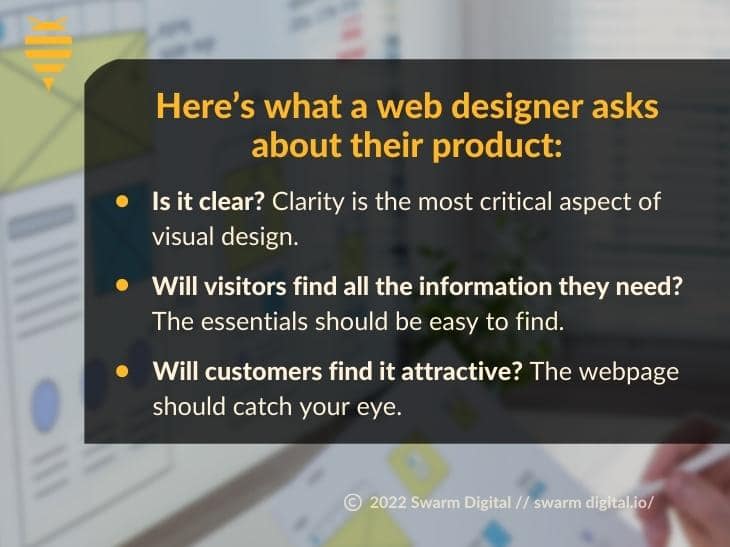
How Swarm Digital Approaches Design
At Swarm Digital, great design means we’ve taken your needs and translated them into a functional presence on the web. We take time to understand your needs, carefully designing a site that will be clear, informative, and attractive.
Check out this site for Island Poke and ask yourself this: is it clear? Does it tell me what I need to know? Is white space used correctly to emphasize the right places to click and explore? Do the colors match the branding? Do your eyes go to the right place? Did you scroll down to see more?
When web design works, your customers’ eyes will delight in what they see. The result? You’ll find them at your doorstep.
Now, let’s look under the hood at web development.
Development – How It Works
Web development is the craft of making a website functional.
Imagine an iPhone (maybe you’re an Apple person, maybe not–bear with us). Essentially, it’s just a box with a screen on it. But it’s design-y. You pick the thing up. It feels cool. Even though half the earth owns one, you want that glow-box for yourself. It’s sharp, smooth, beautiful–a superb design effort.
Now, take that iPhone and smash it on a table until all that’s left is glass, metal, and circuit boards. Good job! Not only do you feel better, but you get to see its guts–all the minutely arranged, complicated parts that make it function.
That iPhone was so simple on the outside that you didn’t realize how complex and beautiful that object is underneath.
And that’s the difference between website design and website development. Great design looks gorgeous. Great development is even better: it works. Web developers create the code that makes your website do what your customers need it to. They use languages like HTML, PHP, CSS, JavaScript, Python, and more.
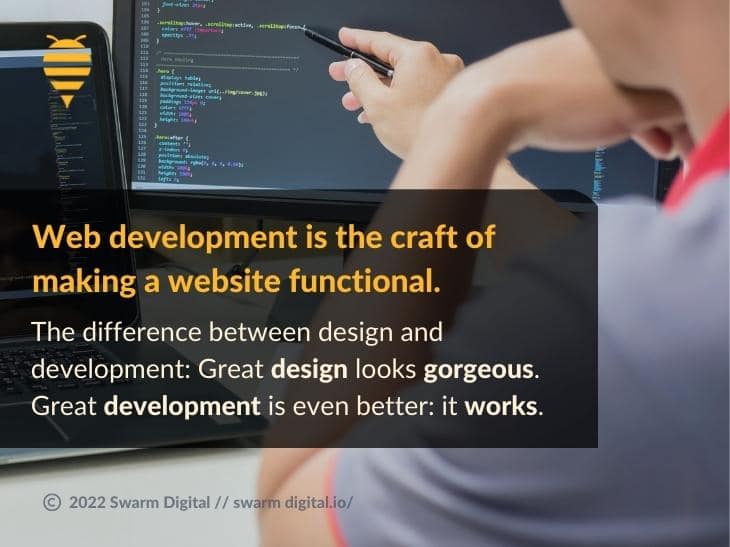
These are questions that drive web developers:
Does It Work On All The Things?
You may have heard the term ‘responsive design.’ It’s crucial on the development side of the equation. When a website is opened on a desktop computer, it looks one way; on a cell phone, it’s different. What about ARIA (Accessible Rich Internet Applications)? Does the site load the same on Safari, Chrome, Firefox, Edge, Brave, DuckDuckGo!, and their mobile variants? Is it bug-free?
Does It Work With All The Things?
Many websites are souffles that integrate external services like video players, payment processors, forms, and more. A site might plug into CMS software, analytics, and email providers. A web developer ensures these elements are incorporated seamlessly.
Does It Work?
Wherever there’s code, there are bugs. Ensuring a website is bug-free is a dead-serious business. Do you ever read about new video games that are released while full of bugs? Do you ever wonder why that happens even when they’re blockbuster games with Hollywood stars?
Bugs. They keep web developers up at night–but a good web developer knows how to keep them out of users’ lives.
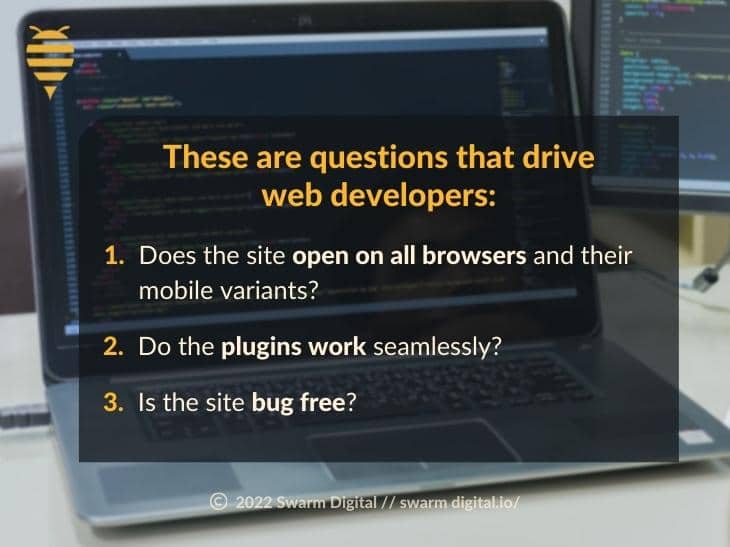
How Swarm Digital Approaches Development
Swarm Digital is passionate about web development and functionality. We build sites on two of the most powerful, reliable, scalable, and functional platforms available: WordPress and Shopify. We’re extremely comfortable with other platforms such as WiX and Squarespace. With nearly two decades’ experience on the coding end, your site will not only look good, but it will also work so well you won’t notice the code behind the curtain.
We also work on pre-existing sites. Whether you need maintenance, can access your site but are unexpectedly left without a site manager, or need changes you need executed quickly, we specialize in helping clients who need someone to pass the ball to.
Conclusion
What’s the difference between website design and website development? Designers create the visuals; developers write the code that makes a site work. Design is what you see; development is what you don’t. Both are vital components of creating the site you want.
Do you want a website that looks great and works even better? Call the experts at Swarm Digital now at +1(855) 244-4407 or click here for a consult.
